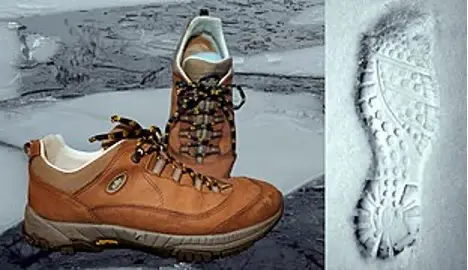Main photo courtesy curearthritis.org
A Guide to Avoiding Knee Replacement
By Dr. James Katz, MD, MPH
Last year there were 600,000 total knee replacement surgeries in the United States. Insurers spend five billion dollars on knee procedures per year. It is a remarkable procedure. However, it is still a work in progress. It is major surgery with extensive rehabilitation. 20% of people suffer chronic knee pain after knee replacement. The primary indication for knee replacement is pain. This means one out of five patients traded one kind of pain for another. Every year the implant designs improve, so the 20% theoretically should improve. However, the population getting replacement gets older, so comorbidities block improvement. The real surgical improvement is artificial cartilage, which could be inserted in a 40 minute arthroscopy. However, it has been more promise than production. For the moment, avoiding knee replacement or extending the interval till you need it is the way to go. After fifty years of debate, we even have evidence that your choice of shoes can matter.
20% of people suffer chronic knee pain after knee replacement. Share on XHow We Destroy Our Knees
We Weigh Too Much:
| Year | Average weight in Pounds |
| Males | |
| 1960 | 166 |
| 2020 | 197 |
| Females | |
| 1960 | 140 |
| 2020 | 170 |
This 30-pound increase affects walking as well as running. When running, the pressure as the heel strikes the ground is 3 to 4 times the baseline, or 120 extra pounds per stride. The total would be an extra 60 tons of impact pressure per mile.
Another way to visualize the forces to make them horizontal. Imagine you are lying on the table and someone is striking you on each heel fifty times a minute with a 30-pound hammer, which would be jogging speed. For walking speed, it would be an 8-pound hammer 30 times a minute. The impact is transmitted to the knee.
How deleterious is excess weight? VERY!

Ed Yourdon | Wikicommons
We Don’t Concentrate On our Form When Walking or Running:
Consider the difference when you are walking rapidly down the sidewalk in shoes versus when you are walking rapidly barefoot in the house. Both surfaces are hard, but on the sidewalk you striking your heels, while at home you reduce the impact force by walking flat-footed and taking shorter strides in what is more of a sliding motion. There is a wonderful website – HarvardBarefootRunning – which details the differences in striking the pavement with the heel versus with the midfoot. By taking a shorter stride, and shifting weight more over the foot, one can get all the exercise one wants. You will finish behind the heel-strike runners; their running careers will likely finish before yours, all things being equal. Midfoot strike is so much kinder to one’s body that distance runners, sidelined by repetitive foot injuries, frequently return to running.
People with knee arthritis were less likely to report pain and stiffness if they wore stable, supportive shoes. Share on XMaking shorter strides walking is awkward. You get nowhere quickly and shuffling along is uncomfortable. However, if you take a shorter stride with the leg with the painful knee, alternating with a regular stride with the good leg, you will be almost as fast as regular walking and with less pain. The pain is reduced because the “short stride” produces less impact. The term comes from extreme mountain climbing, where at altitude, the difference in one’s legs is more pronounced. The healthy leg takes the long stride and the momentum helps the weaker leg move forward with less impact.

Th. Voekler | Wikicommons
We Wear the Wrong Shoes:
People with knee arthritis were less likely to report pain and stiffness if they wore stable, supportive shoes, versus flat-soled, flexible ones. Researchers in Australia divided 164 patients with knee arthritis into two groups and surveyed them over a six-month period. The stable supportive shoe group had 50% less pain,
Why should this be? The knee joint is not a stable hinge: your lower leg bone, the tibia, rotates approximately 15° with each step, grinding the joint. This rotational motion is greater with a softer shoe. Hikers have known this for decades, and while their shoes are not style killers, they can carry 60 pound packs.
Since arthritis is the number one condition leading to joint replacement, consider changing your shoes. Here are the shoe brands used in the test: Footwear in the flat shoe category included the Merrell Bare Access, the Vivobarefoot Primus Lite, the Vivobarefoot Mata Canvas, the Lacoste Marice and the Converse Dainty Low. In the stable supportive group, shoes included the ASICS Kayano, the Merrell Jungle Moc, the Rockport Edge Hill, the Nike Air Max 90 Ultra, and the New Balance 624.

vastateparksstaff | Wikicommons
Can We Transfer the Impact of Walking Elsewhere in Our Body?
Take another lesson from hikers and get hiking sticks. Someone walking with a 50-pound pack is exquisitely sensitive to anything that reduces foot pain. The type of hiking stick you want has a grip that is comfortable, has height adjustments, and has shock absorber springs in the tips. For those of you that travel, there are hiking sticks that fold into three or four parts.
I had a female patient who said hideous shoes and childish sticks would not fit into her corporate culture. I suggested she get a Gucci back bag, collapsible walking sticks to hide at the office, and use supportive shoes and while keeping corporate style shoes at work. After trying it for two days, she called me to inform me she had stopped her daily Aleve.

FXShannon | Wikicommons
We Don’t Do the Right Exercises:
Running is not the best exercise. Bicycles, rowing, elliptical machines, and stair climbers have close to zero impact and will provide all the aerobic challenge of running. Swimming can inflame the knees – the frog kick, crawl kick, and backstroke kick all cause hyperextension of the knee. Squats cause hyperflexion,
Another key to reducing knee pain is strengthening ligaments around the knee joint using leg press and the knee extension machines. Your knee should bend more than 45° from straight. The increased muscle tone and ligament strength will stabilize the knee by reducing abnormal motion in the joint.
The advice is: lose weight, take shorter strides, make smoother impacts, wear supportive shoes, strengthen your legs, use walking sticks, and by all means, get a Gucci bag. You’ve earned it!

